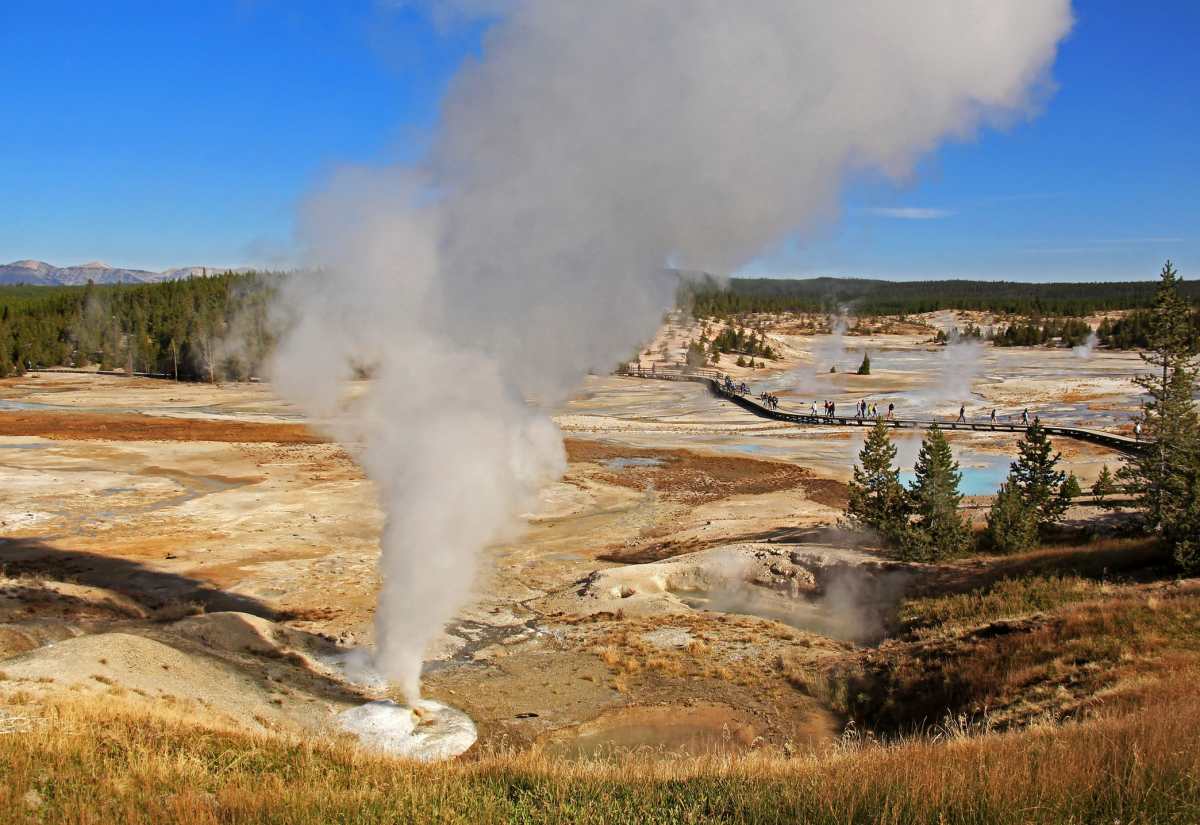Is It Safe to Drink the Water in Yellowstone? Here's an Expert Advice You Should Hear

Yellowstone is a cauldron of untamed waters that rampage for thousands and thousands of miles, fed by the melting stone of the Northern Rockies, seven majestic rivers, glaciers, and a treasure of minerals discarded by aggressive volcanoes each time the magma-dipped belly beneath the ground erupts, per NPS. Every time this underground volcanic world becomes too restless with heat energy, it spews fire that makes the headwaters burst into hot springs, geysers, mudpots, and fumaroles. The underpinnings of plant and animal life also leave their traces in these wild waters.

However, can you drink these salty waters and expect to stay alive and healthy? Research chemist Blaine McCleskey debunked the mystery in a column organized in collaboration by the Yellowstone Volcano Observatory and the USGS.
Thermal waters

McCleskey classified the waters of the Yellowstone National Park, adding, “Thermal water should not be used as drinking water.” The first reason why he prohibited travelers from drinking this otherwise mineral-rich water is that the ground that this water travels through, while becoming heated, is not always smooth. It is often laced with chemicals and ingredients that might not be safe for the human body. Elevated concentrations of some of these chemicals, such as arsenic, antimony, mercury, and fluoride, can even have deathly effects when ingested. It’s not just the chemicals. As this water traverses its journey, it often picks up Naegleria, a brain-eating amoeba that can dribble inside the body and really eat up the brain.
Non-thermal waters

Non-thermal waters, on the flip side, are relatively safe to drink. Not absolutely, though. Derived from creeks and rivers, these waters are infested by microorganisms like E. Coli or parasites such as Giardia, that can be removed by filtration or sterilized by chlorination, iodination, or boiling before drinking. What about the mixed waters? Well, mixed waters, according to McClenskey, are relatively safer to drink, as long as you dilute them before drinking.
Mixed waters

These waters are a kind of puzzle you need to solve each time you dip a bottle or a palm to sip some water. For instance, boiling might remove the microorganisms, but it won’t remove concentrations of harmful chemicals from the water. Another method might be good for removing the chemicals, but inefficient for dealing with microorganisms. The key here is vigilance and a little bit of testing.
Mystery solved

However, all this information doesn’t imply that Yellowstone’s waters are cursed by volcanic gods or trippy minerals that might send you into a slumber. According to McClenskey’s hunch, Yellowstone also cradles a wellspring of safe drinking water, especially in its backcountry segment. “When looking to top off your supply, ask yourself, ‘Where does the water come from and is there a thermal area upstream?' Whenever possible, choose a river or stream without thermal waters draining into it. Enjoy the Yellowstone backcountry, and stay safe,” he explained. Hence, the mystery is solved.
More on Green Matters
A Yellowstone Visitor Broke a Cardinal Rule and Drank From a Thermal Spring
Is Yellowstone Going to Erupt Soon? Here’s Why You Don’t Need to Worry
Thrilling Footage Shows a Female Wolf’s Surprising Encounter With Tourists at Yellowstone